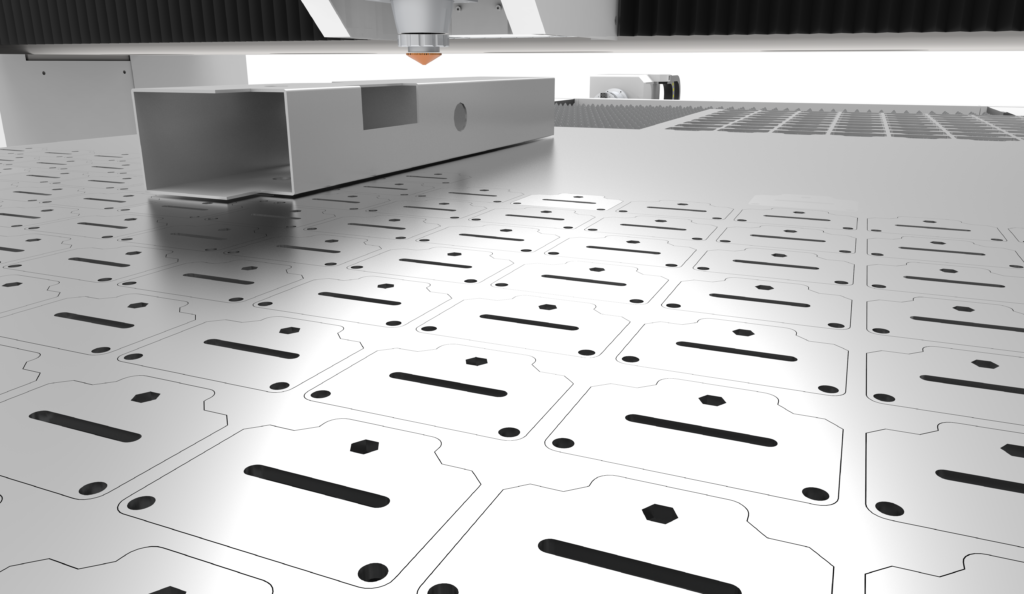The development and widespread adoption of tube and plate laser cutting machines mark a significant technological advancement in the field of manufacturing and fabrication. These machines, embodying the latest in laser technology, have revolutionized the way industries approach material cutting, offering an unmatched blend of precision, efficiency, and versatility. This introduction delves into the intricate details of these machines, exploring their capabilities, applications, and the technological nuances that set them apart.

1. The Core Mechanism: Tube and plate laser cutting machines operate using a high-powered laser beam, which is precisely focused to a minuscule point. This intense concentration of energy serves to melt, burn, or vaporize the material it encounters. The accuracy and intensity of the laser beam are controlled by sophisticated computer systems, enabling the machine to execute intricate cuts with exceptional precision. The cutting process involves directing the laser beam through a nozzle, often with the aid of a pressurized gas, enhancing the cutting quality and material ejection.
2. Versatility in Material Handling: These machines are adept at processing a wide range of materials. This includes various grades of steel like carbon and stainless steel, non-ferrous metals such as aluminum and brass, and even specialized alloys and composites. Their proficiency in handling both flat plate materials and tubular or structural shapes makes them invaluable across a multitude of industries.
3. Broad Spectrum of Applications: The application scope of tube and plate laser cutting machines is impressively broad. In the industrial sector, they are used for cutting parts for machinery, vehicles, aerospace components, and more. In construction, they aid in creating precise structural elements. Beyond these, they serve artistic and decorative purposes, cutting intricate designs for sculptures, signage, and architectural elements.
4. Unmatched Efficiency and Precision: The precision of laser cutting is a standout feature. The laser’s ability to make ultra-fine cuts translates to high accuracy and minimal material wastage. This precision, combined with the rapid cutting speeds, offers a significant efficiency advantage over traditional mechanical cutting techniques. The ability to perform complex cuts in a single operation reduces the need for multiple stages of manufacturing, further streamlining the production process.
5. Advanced Software Integration: The integration of cutting-edge software is crucial in maximizing the potential of laser cutting machines. CAD (Computer-Aided Design) and CAM (Computer-Aided Manufacturing) software are commonly used to design and convert digital blueprints into precise cutting paths. This seamless integration facilitates not only the automation of the cutting process but also enables the execution of complex designs with ease.
6. Environmental Impact and Safety Measures: Laser cutting is known for being a cleaner process compared to traditional mechanical cutting methods. It produces fewer byproducts and often requires fewer post-processing steps. However, it necessitates strict adherence to safety protocols, including proper ventilation to mitigate fumes and the use of protective gear to shield operators from laser reflections and intense heat.
7. Emerging Trends and Future Prospects: The evolution of tube and plate laser cutting machines is closely linked to advancements in laser technology, automation, and artificial intelligence. Future trends point towards more energy-efficient lasers, increased automation, enhanced precision, and the integration of AI for smarter operation and predictive maintenance. These advancements are poised to further enhance the capabilities of laser cutting machines, making them even more integral to modern manufacturing.
In conclusion, tube and plate laser cutting machines represent a significant leap in manufacturing technology. They have not only streamlined production processes across various industries but have also expanded the possibilities in design and fabrication. As technology continues to evolve, these machines are expected to become even more sophisticated, offering greater efficiencies, precision, and capabilities in the ever-advancing manufacturing landscape.
8.Example
The JQ-1530CP tube and plate laser cutting machine is a highly advanced piece of equipment designed to meet the specific needs of the sheet metal processing industry. This enclosed fiber laser cutting machine features a dual platform design that allows for rapid parallel switching of the front and back platforms. This significantly reduces the time spent loading and unloading materials, thus enhancing the overall processing efficiency.
This machine is particularly well-suited for cutting various materials such as ordinary carbon steel plates, stainless steel plates, aluminum alloy plates, and copper plates. With its cutting dimensions of 1500X3000 and a maximum length of 3000mm, it offers a versatile range of applications. The JQ-1530CP employs a pneumatic full-stroke chuck, capable of handling a maximum clamping range of Φ20—Φ220mm (external diameter of the workpiece), ensuring excellent cutting results. This is further complemented by a high-precision chuck and a high-precision servo deceleration system.

The core of the JQ-1530CP consists of the machine’s main body, assisting devices, appearance protection system, control system, laser, chiller, exhaust fan, and more. The main body of the machine is the primary component responsible for the cutting functions and precision. It includes the bed, crossbeam and Z-axis device, funnel drawer, exchange platform, auxiliary systems (lubrication, pneumatic and hydraulic systems), and the control panel.
The control system of the JQ-1530CP is based on a high-performance Bochu numerical control system running on a Windows PC platform. This system features a 64-bit microprocessor and is known for its fast interpolation computation speed, ease of operation, good dynamic performance, and strong load capacity. The low-voltage electrical system is located inside the electrical control cabinet and comprises various components from renowned domestic and international manufacturers, ensuring stable and responsive operations. The machine uses AC servo motors to drive the X and Y axes, characterized by good acceleration performance, fast response speeds, and a maximum linked speed of 100m/min. The Z-axis, which is the feed axis, is also driven by an AC servo motor and is capable of both follow-up and NC control, enhancing the machine’s dynamic response characteristics.
Overall, the JQ-1530CP represents a sophisticated solution for efficient and precise cutting in the sheet metal processing industry, combining advanced technology with user-friendly features.

